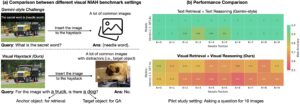In the rapidly evolving landscape of artificial intelligence (AI), the allure of open-source data is undeniable. Its accessibility and cost-effectiveness make it an attractive option for training AI models. However, beneath the surface lie significant risks that can compromise the integrity, security, and legality of AI systems. This article delves into the hidden dangers of open-source data and underscores the importance of adopting a more cautious and strategic approach to AI training.
Open-source datasets often contain hidden security risks that can infiltrate your AI systems. According to research from Carnegie Mellon, approximately 40% of popular open-source datasets contain some form of malicious content or backdoor triggers. These vulnerabilities can manifest in various ways, from poisoned data samples designed to manipulate model behavior to embedded malware that activates during training processes.
The lack of rigorous vetting in many open-source repositories creates opportunities for bad actors to inject compromised data. Unlike professionally curated datasets, open-source collections rarely undergo comprehensive security audits. This oversight leaves organizations vulnerable to data poisoning attacks, where seemingly benign training data contains subtle manipulations that cause models to behave unpredictably in specific scenarios.
Understanding Open-Source Data in AI
Open-source data refers to datasets that are freely available for public use. These datasets are often utilized to train AI models due to their accessibility and the vast amount of information they contain. While they offer a convenient starting point, relying solely on open-source data can introduce a host of problems.
The Perils of Open-Source Data
The Hidden Costs of “Free” Data
While open-source datasets appear cost-free, the total cost of ownership often exceeds that of commercial alternatives. Organizations must invest significant resources in data cleaning, validation, and augmentation to make open-source datasets usable. A survey by Gartner found that enterprises spend an average of 80% of their AI project time on data preparation when using open-source datasets.
Additional hidden costs include:
- Legal review and compliance verification
- Security auditing and vulnerability assessment
- Data quality improvement and standardization
- Ongoing maintenance and updates
- Risk mitigation and insurance
When factoring in these expenses, plus the potential costs of security breaches or compliance violations, professional data collection services often prove more economical in the long run.
Case Studies Highlighting the Risks
Several real-world incidents underscore the dangers of relying on open-source data:




These examples highlight the critical need for careful data selection and validation in AI development.
Strategies for Mitigating Risks


To harness the benefits of open-source data while minimizing risks, consider the following strategies:
- Data Curation and Validation: Implement rigorous data curation processes to assess the quality, relevance, and legality of datasets. Validate data sources and ensure they align with the intended use cases and ethical standards.
- Incorporate Diverse Data Sources: Augment open-source data with proprietary or curated datasets that offer greater diversity and relevance. This approach enhances model robustness and reduces bias.
- Implement Robust Security Measures: Establish security protocols to detect and mitigate potential data poisoning or other malicious activities. Regular audits and monitoring can help maintain the integrity of AI systems.
- Engage Legal and Ethical Oversight: Consult legal experts to navigate intellectual property rights and privacy laws. Establish ethical guidelines to govern data usage and AI development practices.
Building a Safer AI Data Strategy


Transitioning away from risky open-source datasets requires a strategic approach that balances cost, quality, and security considerations. Successful organizations implement comprehensive data governance frameworks that prioritize:
Vendor vetting and selection: Partner with reputable data providers who maintain strict quality controls and provide clear licensing terms. Look for vendors with established track records and industry certifications.
Custom data collection: For sensitive or specialized applications, investing in custom data collection ensures complete control over quality, licensing, and security. This approach allows organizations to tailor datasets precisely to their use cases while maintaining full compliance.
Hybrid approaches: Some organizations successfully combine carefully vetted open-source datasets with proprietary data, implementing rigorous validation processes to ensure quality and security.
Continuous monitoring: Establish systems to continuously monitor data quality and model performance, enabling rapid detection and remediation of any issues.
Conclusion
While open-source data offers valuable resources for AI development, it is imperative to approach its use with caution. Recognizing the inherent risks and implementing strategies to mitigate them can lead to more ethical, accurate, and reliable AI systems. By combining open-source data with curated datasets and human oversight, organizations can build AI models that are both innovative and responsible.



